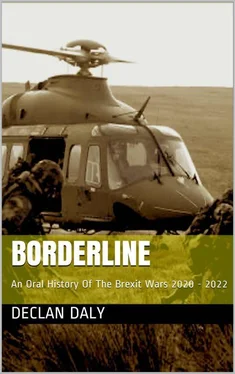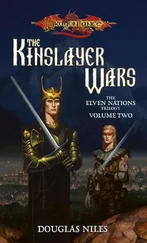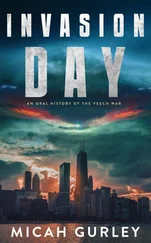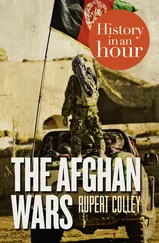ETL: Effective Translational Lift. When you move from a hover to forward flight (or any other direction actually) you pass through a speed where you gain effective translational lift. This is the bit where you stop ‘hovering’ and start ‘flying’. At this point you can kind of think of the rotor blades as forming a disk that kind of works like an airplanes wing. Why ‘kind of’? Because there’s a lot more going on than that, but just go with it for now. The main point of it all for the pilot, is that you require less engine power above ETL (up to a certain speed), than you do in a hover. If you are doing a recce at high weights, down wind and drop below ETL without realizing it, you may find yourself running out of the engine power required to stay at whatever altitude you’re at. This is a bad thing.
LTE: Loss of Tail Rotor Effect. Nothing has broken but for whatever reason, you’ve asked for more directional control than your tail rotor can give. Can mainly happen if you’re heavy, if you’re down wind with no airspeed or from a combination of a number of other things that you should really have avoided in the first place. It will manifest itself by you running out of travel on the yaw pedals and the aircraft starting to rotate. You get out of it easy enough by putting the nose down for speed and letting off a bit of power (and thus torque), but both of these require altitude. Thankfully, not a big issue for the AW139 unless you really ask for it, but I’ve seen it on Garda Air Support Unit (GASU) EC135s which tend to be well loaded up at all times.
Wx: Weather (warning: Met Forecasters should look away now – this is a massively gross oversimplification). Ireland sits at the same latitude as parts of Alaska but we usually avoid some of their colder conditions. The reason is that Ireland is situated on the edge of the Atlantic where most of our weather systems originate. It’s also where the Gulf Stream, which brings warmer water up from around Mexico approaches landfall. This warmer water evaporates and moves inland. This means that we have a largely temperate climate that is influenced by the ocean but with a warm bit providing greater amounts of rainfall. We also have winds coming across the ocean uninterrupted and hitting our West Coast, which gives us our sometimes sprightly breezes. Compounding this, as you move inland, the country is more or less flat in the middle but filled with rivers, lakes and bogs which provide ample extra moisture to provide fog when conditions are right.
During Winter time, instead of temperate Atlantic weather, we will often get cold Northerly winds coming down from Siberia bringing polar air masses. If cold enough, these bring freezing temperatures but clear skies.
Predicting weather in Ireland can’t be easy as it’s frequently different every thirty nautical miles or so. The critical margins for us as heli crews, from about 5KM vis down and cloudbases of about 500 feet or less, can be so massively affected by local conditions that you just have to accept sometimes that you will have 10KM vis or none at all and be prepared to work accordingly.
Yaw plane: How to explain, if you were to look at a helicopter from above and observe how it runs left or right, flat, the same way a car would, that’s the yaw plane.
Vis: Visibility – the distance in meters that you can see and positively identify an object. Positively is the key word – if you can see a glowing ball of light in the mist where a town should be 5KM away, you do not have 5KM vis. If you can see a windfarm on a clear day 20Km away, you have 10+ vis because that’s what will be written down in a weather report.
TAF: Terminal Area Forecast – The weather forecast for an airport for a given period of time. There are Short TAFS (likely to be somewhat accurate for VFR flight) and Long TAFS (likely to be fictional the longer you go from when they were issued).
VFR: Visual Flight Rules – you are flying and navigating by reference to what you can see outside the window. There are minimum limits for launch for VFR flight rules, in our case 3Km vis and 500’. This will seem high to some other operators, but they are there because if you launch on 3Km and 500 feet in Ireland, you won’t go far without finding No KM and No hundred feet.
Met Eireann: The national agency that provides weather forecasts and other acts of wizardry. Whilst they are certainly practitioners of dark arts, I’ve found them to be generally a nice bunch of people, doing their best to give us the best information possible.
IFR: Instrument Flight Rules – Flying by reference to your cockpit instruments and, in normal operations, largely reliant on your destination being equipped with a standard of navigation aides high enough to allow you to land. This almost exclusively means airports.
VOR: VHF Omnidirectional Radio – a ground based nav aide that sends out signals like spokes on a wheel. Each spoke is called a radial and can be used to indicate where you are in relation to an airport.
ILS: Instrument Landing System – Two sets of radio equipment that send out very narrow beam signals in a cone expanding outward from source. When you are in the middle of each cone, you know you are lined up laterally and vertically on your chosen runway.
DME: Distance Measuring Equipment – Another nav aid that tells you how far away from it you are. Used in conjunction with ILS and VORs to make up an instrument approach.
Approach Chart: Or Jeppesen Chart, or just Jeppe Chart.This is a page that gives a written and pictorial set of instructions to a crew working under IFR on how to land at a given runway without flying into the surrounding countryside or other aircraft.
Task: A task, call, shout or job is a request from the NACC for us to go on a specific mission to pick up a patient or treat them at scene for onward transport by an ambulance.
NACC: National Aeromedical Control Centre. A one-person desk based in the ambulance control centre in Tallaght that must be manned 24/7 and tasks all aeromedical flights, be they EAS, fixed wing international transport or other rotary wing domestic or international flights.
CFIT: Controlled Flight into Terrain – Crashing an otherwise serviceable aircraft for anyone of about twenty billion reasons. Still happens occasionally despite all the barriers we try to put in place and all the technology we throw at helicopters to stop it.
Deconfliction: Making sure you’re not in the same bit of sky as another aircraft at the same time. Depending on the type of airspace you are working in, deconfliction will either be provided by ATC, or by mutual agreement over the radio. If all else fails, look out the window and don’t fly into other aircraft.
ICAO: International Civil Aviation Organisiation – the body that sets out the standards that must be met worldwide by national or regional regulators. ICAO Annex 14 for example, sets out what criteria are needed to actually call something a helipad including safe approach angles, distances from obstacles and the size of the actual concrete circle on the ground.
Challenge and Response: The normal way of completing a checklist in a multicrew aircraft, not a duel to the death. For example, the Challenge by one pilot during the Pre-Start checks could be ‘Circuit Breakers’. The Response by the other pilot will be to physically and visually check the CB panels and call ‘all in’.
DPKO Aviation Manual: The UN Department of Peace Keeping Operations Aviation Manual. Basically, this is how to do aviation the UN way. Coming from a military background the UN way was incredibly frustrating and inefficient.
Up front in the cockpit, it’s Paul’s first day as a fully minted EAS Co-Pilot (P2). In the back, Luke is on his first shadow shift – flying as an observer, learning from the more experienced crewmembers before going live on his own as an EAS crewman/EMT. Myself, Jamie- our crewman and Pat – our Advanced Paramedic (AP) have been doing this for a while.
Читать дальше












